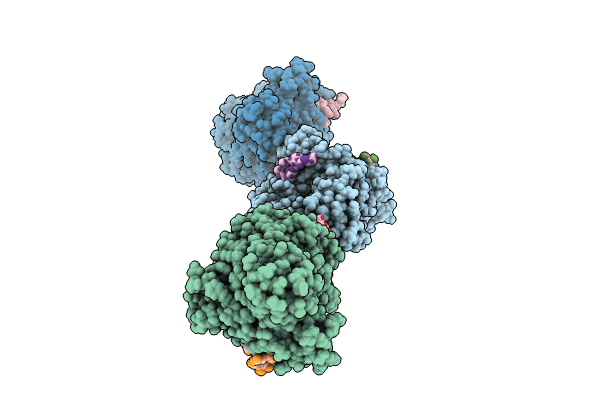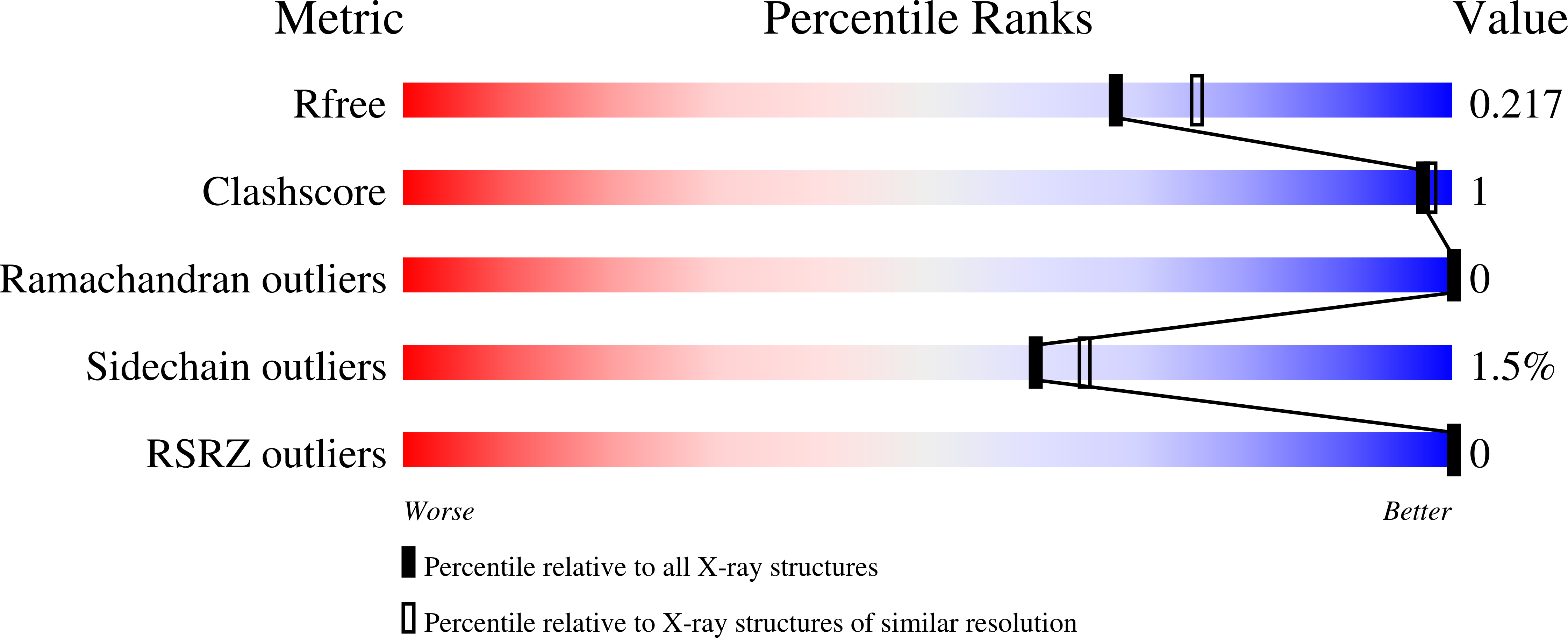
Deposition Date
2024-04-05
Release Date
2024-11-13
Last Version Date
2024-11-27
Entry Detail
PDB ID:
9EX5
Keywords:
Title:
Crystal structure of Yeast Clathrin Heavy Chain N-terminal domain bound to Epsin-5 peptide (LIDL)
Biological Source:
Source Organism:
Saccharomyces cerevisiae S288C (Taxon ID: 559292)
Saccharomyces cerevisiae (Taxon ID: 4932)
Saccharomyces cerevisiae (Taxon ID: 4932)
Host Organism:
Method Details:
Experimental Method:
Resolution:
2.01 Å
R-Value Free:
0.21
R-Value Work:
0.18
Space Group:
C 2 2 21


